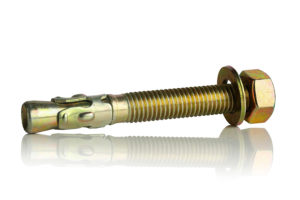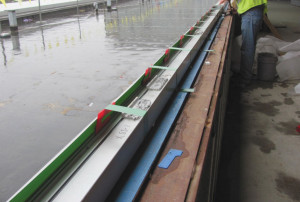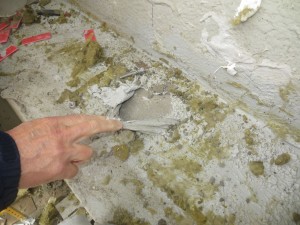Galvanizing is one of the best ways to protect steel, but the complex series of reactions necessary to prevent corrosion can be undermined by exposure. When hot-dipped galvanized steel is first exposed to the atmosphere, near-pure zinc at the surface reacts with oxygen to form zinc oxide.
+ Read More
|
Expansion bolts are commonly used to support new structural attachments in masonry or concrete. For example, expansion bolts are often installed into concrete spandrel beams to hold up new steel relieving angles, which, in turn, support building cladding such as brick or stone.
+ Read More
|
Widely used in buildings ranging from retail/office complexes to hospitals, storefront and window wall systems are specified for ground-level fenestration and entrances, and for punched and horizontal bands (or ribbons) of windows.
+ Read More
|
Preformed silicone transition membranes are increasingly used to integrate fenestration components with the building’s weather-resistive barrier (WRB). This is thanks to increasing recognition of their important role in maintaining WRB continuity at vulnerable transitions between dissimilar exterior wall systems.
+ Read More
|
After suffering property damage, the last thing a building owner wants is another failure of the same system. After determining the failure’s cause, an appropriate and durable remedy should be designed and implemented.
+ Read More
|
Limestone at the base of a building façade is vulnerable to staining from various sources, including planting beds or soil adjacent to the wall, water or snow collecting against the building, and ice-melters used on sidewalks and paving.
+ Read More
|
Despite recent code changes to improve the energy efficiency and overall thermal envelope performance of the building enclosure, parapets can continue to be an enigma in the design process.
+ Read More
|
In response to greater focus on building envelope energy performance, insulation use in the exterior wall cavity has increased.
+ Read More
|
Salt corrosion is not only a problem near the seashore—in fact, there is a significant, and often unrecognized, risk in ‘inland’ areas where seasonal de-icing salts are regularly used.
+ Read More
|
Cast stone is a highly refined architectural precast concrete manufactured to resemble natural building stone. Its popularity was related to the rapid development of the portland cement and concrete industries in the late 19th century.
+ Read More
|
|
|














